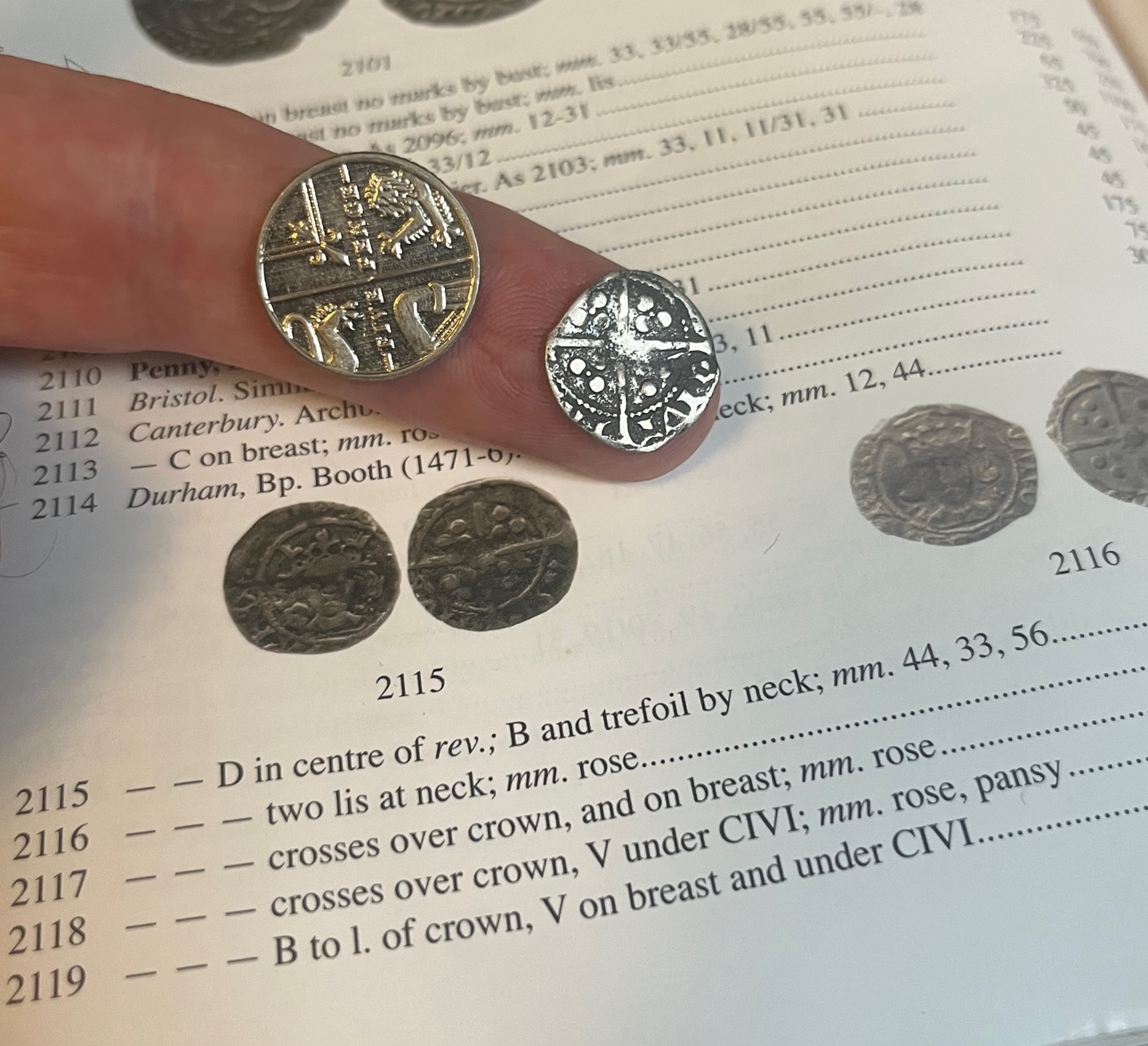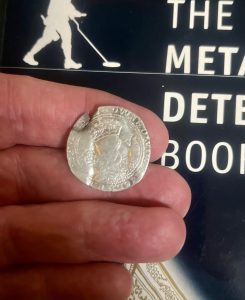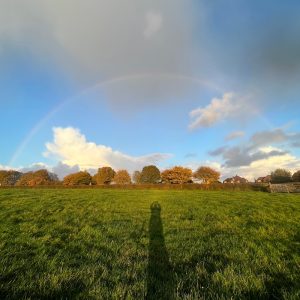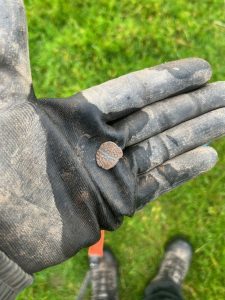
It was a cold and wet Wednesday afternoon when I decided to put a few hours detecting in at one of my local permissions. This is one that hast a major A road running right through it, so 3 fields are on one side of the road and 6 fields are on the other side but I have had some great finds from this area.
I parked my car down a little lane on the opposite side of the road and set up my gear before making the dash across the busy road and making my way down to a low gate into a small oddly shaped field that acts as a cattle drove to move cows between the fields, it is like a long wide grassed avenue with an rectangular holding bay at one end. The ground here is packed down hard and full of rubbish so I decided to hop the next fence into the next field. I say hop but this gate is well over 6 feet high so is a bit of an assault course to get over but I was soon safely over it and setting up my gear in the field.
The weather was poor, it had been raining for a few days now and although it had stopped now, and there was a complete rainbow in the sky, the ground was very wet and muddy, but I was there now so decided to press on with a couple of hours detecting. I had only been in this field very briefly before. The field sloped gently down to a flat field below. The flat field is believed to have been the location of a deserted medieval village, but having detected on it, I haven’t so far found any evidence of that. I decided to detect on the higher part closer to the main road, but not right next to it because I knew that part was full of litter and cans blown over by the speeding traffic just on the other side of the hedge.

I decided not work any specific gridding pattern but to just wander wherever my eyes took me. For some reason I seem to find all of my best finds by just wandering, rather than gridding a field.
As usual when out metal detecting, I was mostly finding scrappy rubbish including ‘moo tubes’, those little used tubes of ointment that are everywhere, especially on dairy farm land. I was also finding scraps of lead and the occasional ring pull.
I then got a nice sounding but quite feint signal. It was definitely worth digging so i took out a reasonably deep plug of turf. My detector showed that the item was still in the hole, but my pinpointer was struggling to find it, so I dug out a little more soil, this time my pinpointer found it and I carefully prised out a muddy clod of soil that contained the item. I slowly took it apart in my fingers but even then was struggling to find the item. It came down to rubbing the mud in between my gloved finger and thumb before I could even find the item. It was a tiny silvery disc, but I just couldn’t quite work out what it was, every time I rubbed it, I just smeared mud across the surface.
I was fairly sure it was a silver hammered coin but had no idea if it really was. I didn’t have a water bottle with me to clean it off so made my way to a nearby cattle trough where there were some puddles of rainwater on the ground and I washed it off in one of those.
As I lifted it out of the puddle there was a kings bust looking right back at me. It was indeed a hammered silver coin,but the smallest one I had ever seen. Was it a farthing? I wasn’t really sure, it just seemed too small to be a penny. I popped it into my finds box and carried on detecting.

I didn’t find much else just an odd lead disc and a pre decimal half penny, then the rain started again, so I decided to call it a day and to head for home, and to find out more about this mystery tiny silver hammered coin.
I gently cleaned it up, just to get rid of the clinging mud and then took a few more photographs, ready to post online to get a definite identification.


The identification soon came in. It was an Edward IV second reign penny. Struck in Durham under Bishop Booth. V on breast, B to left of crown and V under Civi on the reverse. Spink 2119. The second reign was from 1471-1483.
So only a tiny hammered silver coin to show for my metal detecting afternoon, but hammered coins are probably my favourite thing to find.




